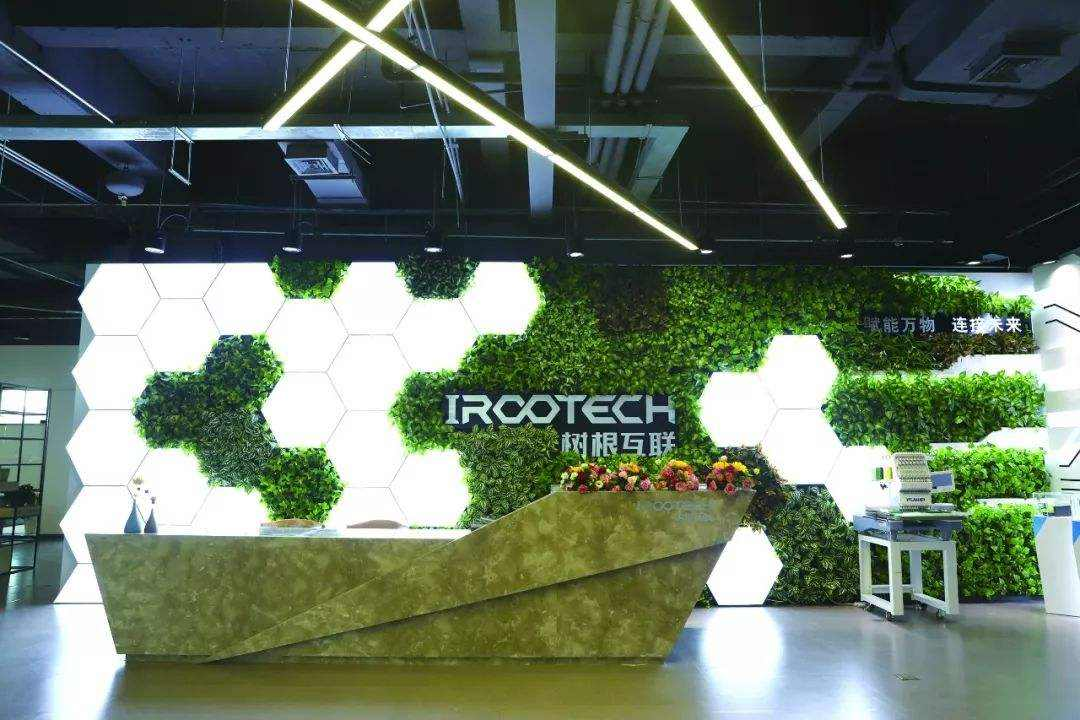AI Vertical Model's Crucial Turning Point: Navigating the Three Major Traps
![]() 05/08 2025
05/08 2025
![]() 643
643
This marks my 370th column article.
Sun Tzu's The Art of War states, "The supreme art of war is to subdue the enemy without fighting." This timeless wisdom underscores the importance of strategic planning over brute force, ensuring victory through foresight and preparation.
As promised in my previous article, "Industrial Internet + AI: Who Will Come Out on Top? Analysis of Four Types of Players," let us now embark on a "pre-mortem" analysis to delve into the potential pitfalls awaiting vertical model enterprises during their transformation journey.
Vertical AI models are currently the darlings of the industry. Amidst this excitement, however, it is crucial to maintain a clear and rational perspective. Let's consider this question: if a vertical model enterprise ultimately fails, what could be its fatal flaw?
Before delving into this intellectual exploration, let us pay tribute to the pioneers who relentlessly test and make mistakes. Their trials and tribulations pave the way for our progress.
While the term "pre-mortem" might sound daunting, it is a creative reverse-thinking decision-making method. Here's how it works: after initially formulating an action plan but before official implementation, decision-makers are required to make a reverse assumption—assuming that the proposed plan has been implemented but has failed. Based on this assumption, participants deduce the possible causes of failure and then adjust and optimize the original plan to maximize risk avoidance and ensure success.
The beauty of this approach lies in its ability to break us out of fixed thinking patterns and encourage us to prudently consider potential future scenarios.
Vertical model enterprises currently stand at a crossroads, facing unprecedented opportunities and challenges. This journey is bound to be fraught with unknowns, opportunities, and risks. Let us use the "pre-mortem" perspective to analyze the keys to success and the hidden dangers of failure for these enterprises, providing insights that can guide the intelligent transformation of the industry.
From "Artificial Intelligence" to "Business Value": The "Critical Point" for Vertical Model Enterprises
ScaleFactor, a startup that utilized AI technology to automate accounting, collapsed spectacularly after raising $100 million in funding. According to former employees, the so-called "AI" did not actually produce financial statements; instead, dozens of accountants manually completed most of the work. Some customers even received flawed account books and had to rehire accountants to rectify the issues.
ScaleFactor's failure is not an isolated case. In fact, every AI startup, especially in its early stages, inevitably relies on human intervention. The role of "AI scientists" is to provide manual assistance when AI cannot independently solve problems, participating in the construction of datasets and the optimization of algorithms.
However, the ultimate goal of startups is to continuously train and iterate, gradually improving automation levels module by module, ultimately achieving near-perfect AI automation.
This is the crucial threshold that vertical model enterprises must cross: ensuring that intelligence is genuinely "absorbed" into the software, rather than merely "packaged" as a service. Only by transforming industry knowledge, expert experience, business rules, and other "soft powers" into model algorithms and embedding them in products can we create true intelligent solutions, not mere surrogates for human services.
Yet, even after crossing this threshold, vertical model enterprises still face another test: transitioning from "big model showcases" to "business value fields." Many enterprises stumble halfway through this transformation.
Some vertical AI enterprises often go astray at the initial stage, positioning themselves as "industry knowledge versions of ChatGPT," thinking that they can conquer the industry by fine-tuning a few models, stacking a few cases, and conducting demo presentations. However, they fail to realize that the true industrial demand is not for a smarter chatbot but for an intelligent agent that can take over processes and deliver tangible results.
Currently, for most users, "vertical models" and even "big models" are still unfamiliar and trendy concepts. If the usage process of these models cannot be simplified and the cognitive threshold for users cannot be lowered, even the most advanced technology may degrade into a mere showpiece.
This poses a significant challenge for the business and technical teams of vertical model enterprises: how to explain this new technology to customers in plain language? How to demonstrate the product's economic viability from the perspective of total cost of ownership? How to provide practical solutions to different customers' pain points with the product? Each question demands thoughtful consideration.
An even greater challenge lies in how to truly integrate vertical models with business processes, forming a closed loop of data flow, business flow, and knowledge flow. If vertical models remain detached from business operations and cannot be embedded into the organization's core functions, even powerful algorithmic capabilities may become mere window dressing.
Deadly Traps for Vertical AI Enterprises: Business Model Confusion

For vertical model enterprises, the deadliest traps often lie not in technology but in business models. If they cannot achieve a fundamental transformation from "selling models" to "selling processes" and from "technology-driven" to "business-driven," even the most advanced algorithms are doomed to be short-lived.
Vertical model enterprises may fall into the common misconception of focusing profitability on API call volume, model fine-tuning services, or customized development. This "selling technology" approach may bring short-term revenue but buries long-term risks. Once customers develop their own modeling capabilities or turn to open-source solutions, these enterprises may face abandonment.
Consider the case of ROOTCLOUD, a former "star platform" in the industrial internet. ROOTCLOUD invested heavily in core technology research and development, accumulating profound strengths in wide connectivity, industrial understanding, high performance, and ease of application. However, this high R&D investment also brought a heavy financial burden, resulting in accumulated losses of over 1.3 billion yuan from 2019 to 2021.
For technology enterprises, initial losses are understandable; the key is to solidify competitive advantages amidst "burning money," optimize the input-output ratio, and cultivate sustainable "hematopoietic" capabilities. If enterprises merely stack technology without creating solutions that truly meet customer needs and create business value, no amount of investment may be worthwhile.
To break this curse, vertical model enterprises need to reconstruct their business logic: sell outcomes, not tools; charge by process, not by call; tie to business results, not to functional modules. Only by shifting from "model as a product" to "business outcome as a service" (BOaaS) can they truly embed themselves in the customer's core business processes and build up high stickiness and barriers.
Conversely, if vertical model enterprises remain hovering at the technical level without delving into the industrial depth, then being replaced by giants' in-house solutions, undercut by general models, or substituted by customers' self-built solutions is only a matter of time.
Ecological Dilemma for Vertical AI Enterprises: From "Single-point Breakthrough" to "Platform Growth"
For vertical AI enterprises, the biggest challenge lies not in technology but in ecology.
Many enterprises are eager to achieve "single-point breakthroughs" in high-value scenarios, hoping to leverage these points to drive intelligent transformation across the entire industry. However, if these single-point breakthroughs cannot be expanded into process reengineering, if isolated scenarios cannot be connected into complete closed loops, and if external ecological partners cannot be attracted to continuously contribute their efforts, then such "single-point victories" are doomed to be short-lived and fail to form an ecological flywheel effect.
Take intelligent quality inspection as an example. These scenarios indeed hold enormous value. If they can significantly improve efficiency, reduce costs, and minimize errors in an intelligent manner, they will undoubtedly bring considerable benefits to customers. However, the problem lies in the fact that these application scenarios are often just one link in the entire business process. If they cannot be integrated front-to-back and side-to-side, it will be difficult for them to truly integrate into the customer's core business, becoming mere "icing on the cake" rather than "timely assistance."
For instance, an intelligent quality inspection tool that can only identify product defects but cannot achieve data connectivity and process closure with production scheduling, process optimization, supplier management, and other links may render even advanced algorithms superficial.
It is evident that for vertical AI to become a genuine industrial platform, it must reshape business processes from end to end, design scenario solutions from a holistic perspective, and build a collaborative closed loop of data flow, control flow, and knowledge flow. This requires enterprises to delve into the front lines of business, jointly comb through processes with customers, reconstruct tasks, break down information silos, and form intelligent solutions that can be orchestrated, optimized, and iterated. Only in this way can "single-point breakthroughs" be expanded into "process reengineering" and "scenario-driven" approaches be upgraded to "platform thinking," truly empowering customers' business innovation.
In this process, vertical AI enterprises should also attach great importance to the power of ecology. A truly vital industrial platform must be able to attract participants of different roles to continuously contribute value, forming a positive cycle of win-win cooperation. This requires vertical AI enterprises to design their system architecture based on the concept of openness and symbiosis from the outset, embedding external innovation forces into the platform's genes.
Final Thoughts
In the fiercely competitive intelligent era, for vertical AI enterprises to remain invincible, they must construct a robust "moat." This moat cannot rely solely on technological leadership but must also depend on the control of industry processes and the construction of ecological networks.
In other words, vertical AI enterprises should transform from "task executors" to "process managers" and shift from single model services to open ecological platforms. If the Agent is the foothold for vertical AI enterprises to construct their moats, then platformization is the commanding height for building ecological moats.
Only by using Agents as a lever to comprehensively take over process execution and aiming for an open platform to attract more participants can we fundamentally lock in industry discourse power.
Specifically, vertical AI enterprises should make precise efforts at three levels:
- Use processes as the traction and Agents as the core to fully participate in and reshape industry processes, achieving a transition from "auxiliary decision-making" to "autonomous execution."
- Be results-oriented and adopt a business outcome as software (BOaaS) business model to provide end-to-end "process outsourcing" services, achieving an upgrade from selling model calls to selling process outcomes.
- Aim for ecology, control the three key elements of task interfaces, data closed loops, and intelligent scheduling, attract diverse participants to access the platform, and build positive network effects and economies of scale.
Processes as the body, results as the wings, and ecology as the soul—this is the three-dimensional moat for vertical AI.
Vertical AI is poised to enter the "Warring States Period." The key to victory does not lie in who has a more powerful model but in who can truly discern the essence of the industry and build a sustainable ecosystem centered on customer value.





